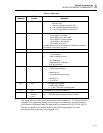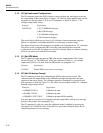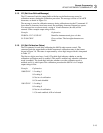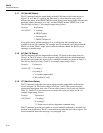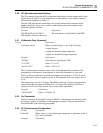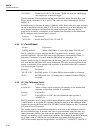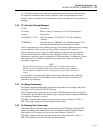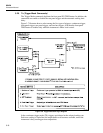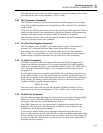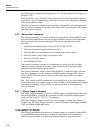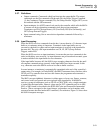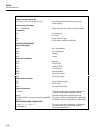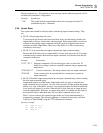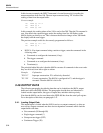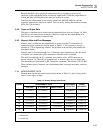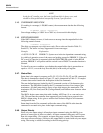
Remote Programming
DEVICE-DEPENDENT COMMAND SET
3
3-19
The trigger mode can be read using the G0 command. The 8842A defaults to T0 on both
power-up and any device-clear command (*, DCL, or SDC).
3-30. Wn (Terminator Commands)
The Terminator commands select what terminators the 8842A appends to every output
string. The available terminators are: Carriage Return (CR), Line Feed (LF), and End Or
Identify (EOI).
CR and LF are ASCII control codes, sent over the data lines just like output data. EOI is a
uniline message which is sent simultaneously with the last character in the output string.
Normally, each output string is terminated with CR followed by LF and EOI.
The terminator selection can be read using the G6 command. The 8842A defaults to W0
on power-up and any device-clear command.
3-31. X0 (Clear Error Register Command)
The X0 command clears the 8842A’s error status register. After an X0 command is
executed, a G7 command (Get Error Status) would return 1000 (no errors).
Note that the error status register is also cleared when any device-clear command (*,
DCL, or SDC) is executed. However, X0 is useful for clearing the error status register
without forcing a complete instrument clear (as do the device-clear commands).
3-32. Yn (Suffix Commands)
The Suffix commands enable or disable a suffix which the 8842A can append to all
numeric data (the data in response to G2 or trigger commands). The suffix includes a
comma, an overrange indicator (>), and a function indicator (VDC, VAC, OHM, IDC, or
IAC). The suffix is illustrated in Figure 3-6. An example of suffixed data is given in
paragraph 3-43.
To read suffixed data with a controller using BASIC, one can read the whole line into a
string variable and then convert the numeric part into a numeric variable. However, it is
much easier to read the numeric part directly into a numeric variable and the suffix into a
string variable. The leading comma of the suffix serves as a convenient delimiter. For
example, a BASIC program statement might be:
INPUT @1,A, B$
The suffix status can be read using the G6 command. The 8842A defaults to Y0 on
power-up and any device-clear command (*, DCL or SDC), unless in talk-only mode.
3-33. Z0 (Self-Test Command)
The Z0 command initiates the diagnostic self-tests as does pressing the front panel SRQ
button for 3 seconds. The 8842A then runs through the tests in sequence. (For a
description of the self-tests, see the Maintenance section.)
If the 8842A detects an error, an error message is loaded into the output buffer and
displayed on the front panel. After the last test, the 8842A is reset to the power-up
configuration, and it begins taking readings.
It is an error to send the 8842A device-dependent commands during the self-tests.
However, the controller can still make the 8842A a talker to read the output buffer during
the test, and thus record each error that occurs, except that only the last of the digital self-
test errors can be read. After the tests, only the last error is stored in the output buffer if
more than one error occurred.



